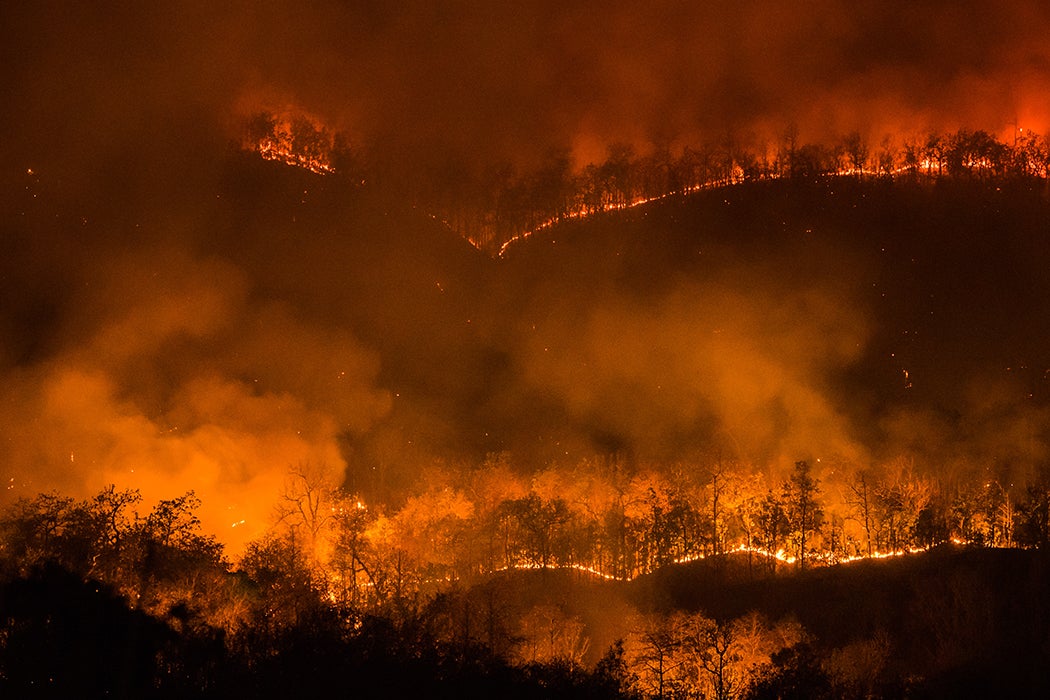It’s been a terrible year for fires. But then again, so was last year. Indeed, in recent years, megafires in Indonesia, the U.S., northern Canada, South America, New Zealand, Siberia, Africa (from South Africa to east Africa), and Europe (from Ireland to Romania), have devoured millions of acres and killed hundreds of people. In August of this year, the tundra in Greenland, of all places, was burning just 50 km from the ice sheet. In the American west, the fire season is now 78 days longer than it was in 1970.
What is going on?
Stephen J. Pyne is the author of five books and many articles on the subject of fire and the long history it shares with humans. His essay on megafires is a good place to start coming to grips with this intimate relationship.
Using the fierce fires in Greece in 2007 as an example, Pyne points to the deadly combination that fuels mass fires. There’s drought (in Greece, the worst in a hundred years); land use/management practices (rural areas have been depopulated of the agriculturalists who once farmed or grazed away the biomass that burns without them); and “humanity’s fire practices.” Humans, not lightning, start most fires, whether accidentally or intentionally. And firefighters’ capabilities have been severally reduced, defunded, and hamstrung by new missions as all-purpose first responders. Pyne notes that water and chemicals dropped from the air make for “good political theater” on TV but only “boots on the ground provide true control.”
Notice the absence of climate change in Pyne’s triangular formulation. He writes, “of course climate change is a factor in fire starts and the behavior of fires,” including the new drought patterns brought on by radical shifts in traditional weather patterns. But, he argues, “global warming has furnished political cover to encourage certain fire-management decisions while allowing climate to take the blame.” It’s easier to blame nature (however much influenced by… people) than it is to look at the actions and inactions of people.
Weekly Newsletter
“Today’s mass fires precisely track regions of massive land-use change,” writes Pyne. Clearing rain forests and draining peat lands in Borneo, for instance, “has sparked some of the largest and most noxious fires in the last 20 years.” Sprawl in the arid American west—terrain that has traditionally burned, indeed requires burning for propagation of plants—is an example closer to home. People keep moving into these areas, bringing their fire-starting abilities (a spark from a golf club hitting a rock, for instance) and more fuel with them. Such terrain is the “fire equivalent of floodplains.” But fire, notes Pyne, shouldn’t be treated as just another natural disaster. Sometimes it is, but more often than not it’s a socio-political disaster.
“Humanity did not invent fire; we seized it from nature,” he writes, but now “we decide where it will go, and what will happen along the way.”







